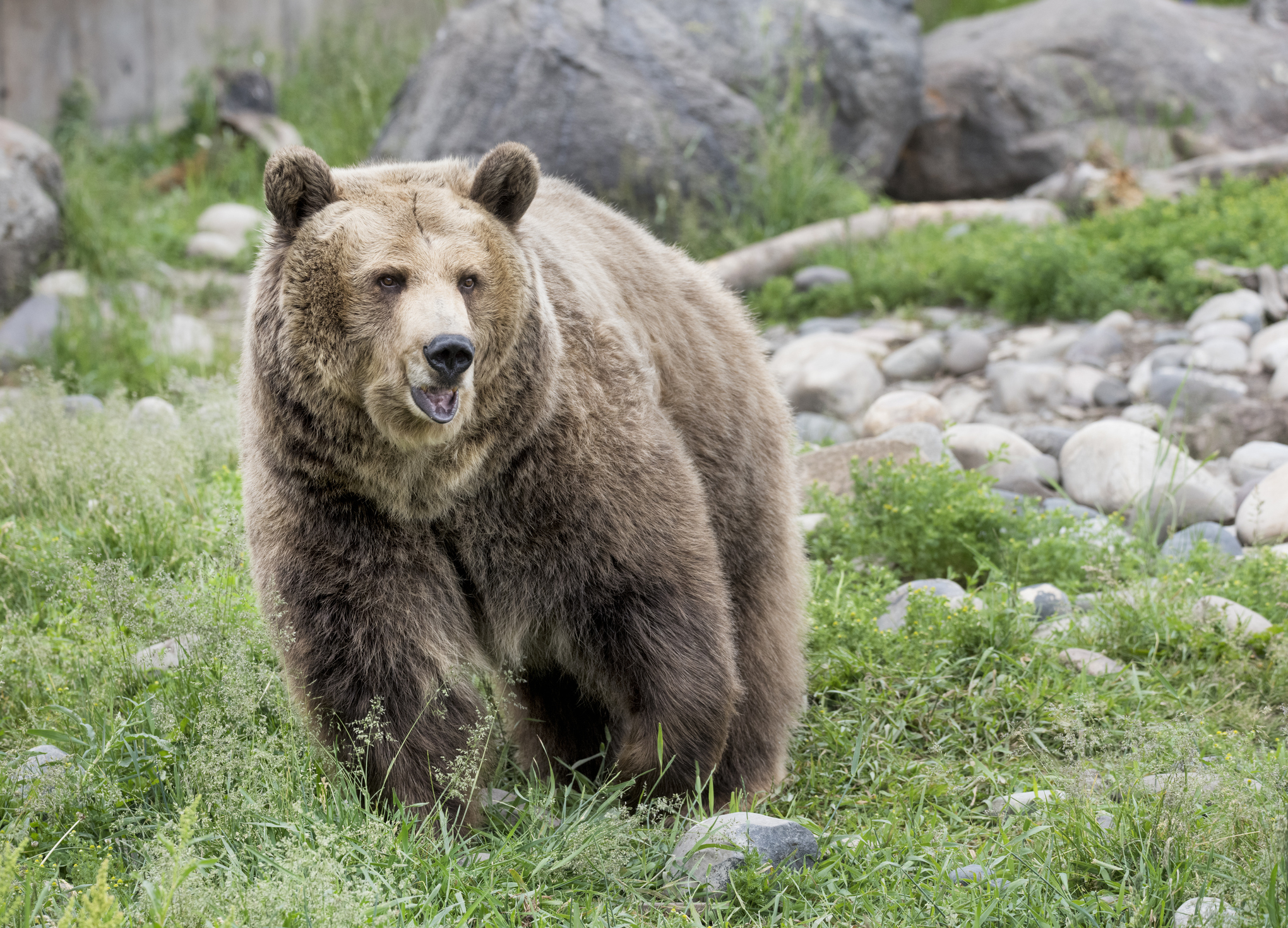
Final rule creates tension between conservationists and wildlife officials.
The U.S. Fish and Wildlife Service (FWS) has delisted part of the grizzly bear population as an endangered species. Last year, the Interagency Grizzly Bear Committee, an internal body within FWS, unanimously approved the delisting’s conservation strategy through a proposed rule—an important step in the delisting process. FWS finalized the rule earlier this summer, and it is now effective.
Now that the rule is effective, protection and management of the grizzly bear population in the Yellowstone National Park area, which is currently protected under the Endangered Species Act (ESA), is in the hands of states for the first time since 1975.
The ESA, passed in 1973, delegates responsibility to the federal government to protect endangered species, threatened species, and critical habitats that are vital to those species. A “listed” species is one that receives protection under the ESA. FWS listed Yellowstone grizzlies in 1975. The state governments of Wyoming, Montana, and Idaho are responsible for managing the Yellowstone grizzly population now that the delisting is finalized.
According to recent reports, FWS and state wildlife officials are confident in their strategy to protect the grizzly bears now that the delisting is finalized. They support the delisting because the three demographic criteria in the Endangered Species Act have been met—meaning the grizzly population has been restored sufficiently that federal protection is no longer needed. FWS established the criteria to serve as benchmarks in the recovery of Yellowstone grizzly bears: the grizzly population can drop no lower than 500 bears and 48 females with young in two consecutive years; 16 out of 18 primary conservation areas under observation must be occupied by females with young; and the grizzly population must be remain within a certain averaged range.
Serena Baker, public affairs specialist with FWS, reflects positively, stating that, “if you look at the numbers for grizzlies bears in the Greater Yellowstone Area, they have rebounded about 500 percent and doubled their ranges to more than 22,500 square miles today.”
Montana Fish, Wildlife & Parks similarly highlights that the “grizzly bear population has been recovered for over a decade,” and that the states are ready to protect the bears once they are delisted.
Nevertheless, environmentalists are worried the grizzly population has not recovered enough to survive the threat of hunting. For instance, Earthjustice has sued FWS over concerns about “trophy hunting”—sport hunting for wild animals.
Conservationists are concerned about overhunting because the delisting approves a Memorandum of Agreement among the Yellowstone states that allows the hunting of grizzlies in Yellowstone for the first time in decades. The agreement allows for the hunting of grizzly bears as long as the male and female bear population sizes remain within a specific range. When grizzly bears were first added to the endangered species list in 1975, there were only 136 bears in Yellowstone. Today, there are over 700. If the bear population in Yosemite falls down to 600, the memorandum mandates the early end of hunting season.
The National Parks Conservation Association further filed a comment on the delisting proposal which quotes FWS as having recognized that “excessive human-caused mortality was the primary factor contributing to grizzly bear decline during the 19th and 20th centuries.”
The federal government been attempting to delist Yellowstone grizzlies from the endangered species list for ten years, and environmental groups have resisted these efforts along the way.
In 2007, FWS issued a final rule delisting Yellowstone grizzly bears. Earthjustice, in turn, brought litigation challenging the final delisting decision on behalf of the Greater Yellowstone Coalition, a conservationist group focused on Yellowstone. Earthjustice won a major battle when a federal appeals court vacated the rule, citing FWS’s failure to adequately address the threat of global warming when considering the rule. In particular, climate change as a result of global warming threatened the loss of whitebark pine trees—an important and dense source of protein and fat for grizzly bears, particularly for female grizzlies with cubs.
When the court sent the delisting back to the agency, Chris Servheen, FWS’s grizzly coordinator at the time, reportedly stated that the “agency intended to resubmit its arguments for removing endangered species protections for grizzlies, this time providing the white-bark pine analysis the court requested.”
Now, with additional data, the agency asserts that the threat of climate change for grizzly bears is minimal. The final rule acknowledges that the grizzly population in the Yellowstone region has continued to grow despite the decline of whitebark pine trees, and that “there has been no correlation between long-term survival of independent bears with a decline in whitebark pine availability.”
Yet, whitebark pine remains a concern among some opponents of the rule because it could indicate that the grizzly bears have yet to be “reconnected” with other bear populations in surrounding wildlife. According to these opponents, the grizzly bears have not been fully restored to their natural habitats because they have not returned to the Bitterroot Mountains of western Montana and central Idaho where they once roamed. Wild Earth Guardians, a wildlife conservation group, argues that “connectivity between these populations is key to ensuring recovery of grizzlies across their range.”
As a result, some environmentalists are worried that delisting is a step away from restoring the Yellowstone grizzly population.
Nevertheless, the delisting decision is now final, and eventually courts may decide whether to uphold or strike down the rule.



